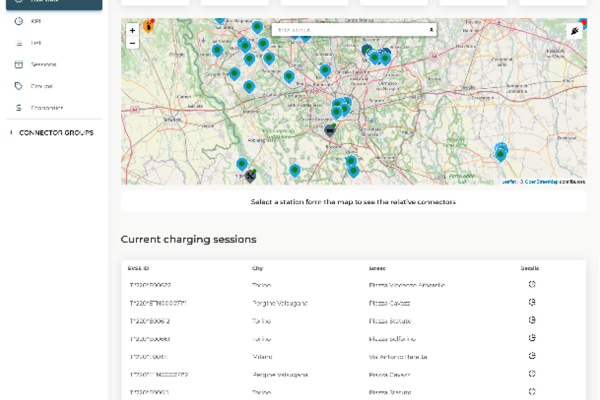THE control arms, commonly known as the A-arms, are the links between your car’s front wheels
and its framework—more specifically, the connection between the wheel hub and steering
knuckles to the chassis.
They’re fitted with bushings on the framework side of the vehicle and ball joints on its wheel side. These two components allow for stretching and movement of the vehicle, depending on the driver’s steering wheel input and the road conditions.
Control arms are an important part of your vehicle as they facilitate the upwards and downwards movement of the wheels while preventing a forward-backwards motion. However, with time, the ball joints or bushings may loosen, break or wear out and contribute to poor handling. There are several signs that tell you your vehicle’s control arms are no longer in good condition.
When you notice them, start planning on how to replace the control arms before the problem escalates to dangerous levels. In this article, you’ll learn six signs that you need to replace them.
1. Wandering steering wheel
When you notice your vehicle pulling either right or left when driving down a road, it could probably be because of the wheel alignment, which you have to correct. However, if you correct the alignment but still feel the vehicle pulling to either side, the issue could be with the car’s control arms.
Excessively worn-out bushings or ball joints may cause unsteady control arms, making them swing uncontrollably instead of being firm in place. As a result, the vehicle will also dangle about and will no longer remain on a steady path. As the driver, you’ll struggle to control your car’s motion to keep it steady on the road.
Such a small component of your vehicle may be the cause of serious consequences if left unattended to and in poor form. Research shows that vehicle technical failures are among the major causes of road accidents. If you notice a wandering steering wheel, make sure to visit your mechanic for a vehicle inspection. If damaged control arms are the cause of the unsteady motion, you might consider replacing them. (1)
2. Thudding noise
This occurs as a result of a severe ball joint or bushing looseness, which causes them to knock against each other, especially when driving over hilly and rough or uneven terrain. Over time, the knocking sound will continuously get louder as the ball joints and bushings wear, until they eventually break down.
If you experience such loud noises, it’s wise to replace the control arms before the situation worsens. The damage may be greater afterwards, as other problems may arise from this one problem, making the repair multiple times expensive. Even if money isn’t really an issue for you, then try keeping in mind that damaged car parts are potentially life-threatening.
3. Vibrating steering wheel
When your vehicle’s steering wheel system has a complication, you’ll often feel it in your hands. It may feel loose, shaky or you’ll feel vibrations. Control arms are part of the wheel system, and if they’re in a poor condition, you’re likely to experience steering wheel vibrations. These vibrations get worse as the vehicle speeds up. If they get to a very violent level, you could be endangering your life, as an accident can occur at any time. (2)
In such a situation, the most reasonable and speedy solution for you would be to slow down for the rest of the journey, then get your control arms replaced as soon as possible.
4. Irregular tread wear pattern
A common sign of damaged control arms is a poor connection between the joining spring and chassis of your vehicle. As a result, those tires with a good spring-chassis connection will bear more of the vehicle’s weight than those with a poor connection. Those with a greater load will, therefore, wear out faster than those with less weight upon them.
If you notice an uneven pattern of tread wear during your routine inspection, among other already mentioned signs, give a thought to replacing your car’s control arms. Consider repairing your tyres or replacing them if the damage is irreversible, so as to avoid future tyre-related complications.
5. Unstable breaking
Although control arms don’t directly constitute the braking system, any instability in your car’s suspension and steering components can cause problems with braking. One sign you may experience is that when you brake suddenly, your car’s front parts may continue moving back and forth as it comes to a stop.
This may not necessarily be a result of damaged control arms, but visiting a mechanic for confirmation would keep you in the know of the exact problem. If the control arms are the cause, then it’s high time you replaced them, especially if this sign is accompanied by other previous signs already mentioned.
6. Observation
You may experience all the signs previously mentioned but still need some visual confirmation. After all, it’s said that seeing is believing. Still, you’ll have to consider the visual option. Try jerking up your vehicle and look at each wheel suspension. If you observe that the A-shaped parts holding the springs to the chassis are damaged, you probably need to replace them.
Vehicle safety should be your primary priority on the road, and if you’re already hearing thudding noises, experiencing unnatural vibrations or feel your steering wheel drift either direction, that might be the time to check and replace your vehicle’s control arms. While replacing any part of your vehicle can be expensive, doing the opposite will just put you and
your loved ones in life-threatening situations. You wouldn’t want to risk your car’s performance and your safety at the end of the day.
References
1. “An Empirical Study Of Road Accidents: Influence Of The Costs Of Living”, Source:
https://www.researchgate.net/publication/281361304_AN_EMPIRICAL_STUDY_OF_R
OAD_ACCIDENTS_INFLUENCE_OF_THE_COSTS_OF_LIVING
2. “Theory Of The Wheel Shimmy Phenomenon”, Source:
https://www.researchgate.net/publication/288238928_Theory_of_the_Wheel_Shimmy_P
henomenon








